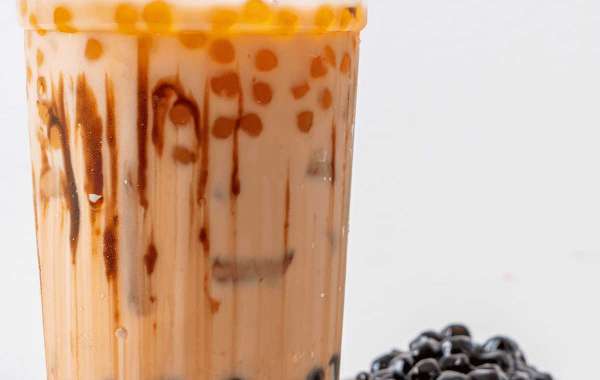Pearl milk tea and bubble tea are other names for boba tea. It’s originating from Taiwan and has gained international acclaim for its delightful concoctions. While the chewy tapioca pearls are its signature ingredient, a variety of additional toppings have emerged, with one of the most popular being jelly. If you're curious about this fun addition, here’s a full guideline about boba tea jelly you should know.
Origins and Evolution of Boba Tea Jelly
Early Days
The use of jelly in drinks is not entirely new. Asian desserts have incorporated grass jellies and agar for centuries. When boba tea jelly gained traction, it was only natural for innovative vendors to begin adding jelly variants to their beverages for a unique texture and flavor.
Popularity Surge
The modern boba scene witnesses a surge in the types of jelly used, from grass jelly to fruit-based jelly, and even coffee and matcha-flavored ones. Their soft, yet slightly chewy texture offers a contrast to the classic tapioca pearls, increasing the beverage's appeal.
Types of Boba Tea Jelly
Grass Jelly
Made from the Mesona plant, grass jelly has a herbal, slightly bitter taste, and its black color is a striking addition to lighter teas.
Agar Jelly
Derived from seaweed, agar-agar creates a clear jelly, which is often mixed with sugars and flavors to achieve a sweeter taste.
Konjac Jelly
Using konjac flour, this jelly type is chewier and rougher than others. It's often used in diets due to its low-calorie content.
Fruit-Infused Jelly
Popular flavors include lychee, mango, and strawberry. These jellies carry a translucent appearance and can be bursting with fruity flavors.
Aloe Vera Jelly
Aloe vera jelly is made from the pulp of the aloe Vera plant. It adds a unique chewy texture and a mild, refreshing flavor to boba tea. Aloe vera jelly is often chosen for its potential health benefits as well.
Coconut Jelly
Coconut jelly is made from coconut water or coconut milk and offers a sweet, tropical flavor. It pairs exceptionally well with coconut-based boba tea or tropical fruit-flavored teas.
Making Boba Tea Jelly at Home
Ingredients for Basic Fruit Jelly
- Fruit juice or puree of choice
- Sugar or sweetener
- Gelatin or agar-agar
- Water
Optional flavorings (like extracts) or food coloring
Process
- Prepare flavored syrup by dissolving sugar in warm fruit juice.
- Soak gelatin or agar-agar in cold water until it expands.
- Mix the soaked gelatin into the warm syrup until it dissolves entirely.
- Add any additional flavors or coloring.
- Pour the mixture into molds or a flat tray and allow it to set in the refrigerator.
- Once set, cut into desired shapes.
Incorporating Jelly into Boba Tea
The Base
The tea base can be any preferred tea – black, green, oolong, or even a non-tea variant like milk or fruit infusions.
Adding the Jelly
Layer the bottom of the cup with a generous portion of your jelly. This ensures a piece of jelly in every sip, enhancing the beverage's textural experience.
Customization
Depending on personal preference, you can adjust the sweetness, add other toppings, or mix different jelly types.
Nutritional Aspects and Health Implications
Caloric Content
While jellies generally have fewer calories than tapioca pearls, their nutritional value mainly comes from the sugars and flavors added to them.
Health Benefits and Concerns
Benefits: Some jellies, especially grass jelly, have cooling properties and can aid digestion.
Concerns: Overconsumption of sugary jellies can lead to unnecessary calorie intake. Also, some commercially produced jellies might contain preservatives or artificial colorings.
Pairing Jelly with Different Boba Tea Flavors
Classic Pairings
Black Tea: Grass jelly or coffee jelly
Green Tea: Agar jelly or lychee jelly
Milk-Based: Mango or strawberry jelly
Experimental Combos
Don't be afraid to experiment! Match tea with strawberry jelly or a taro-based drink with coffee jelly can be surprisingly delightful.
Caring and Storing Boba Tea Jelly
Shelf Life
Homemade Boba tea jelly wholesale usually lasts up to a week when stored in an airtight container in the refrigerator.
Preventing Stickiness
Toss jelly cubes in a bit of sugar or cornstarch to prevent them from sticking together.
Reviving Hardened Jelly
If your jelly has become too firm or lost its chewiness, a brief steam or microwave session can bring it back to its desired consistency.
Conclusion
Boba tea jelly, with its diverse array of flavors and textures, offers a refreshing twist to the traditional boba experience. Its versatility ensures it caters to a wide range of palates, making it a beloved choice for many. Whether you're a boba tea connoisseur or a curious first-timer, diving into the world of jellies will surely add a splash of fun and flavor to your beverage journey. So, the next time you sip on that delicious boba drink, remember that there's always room for a little more jiggle with some delightful boba tea jelly!










